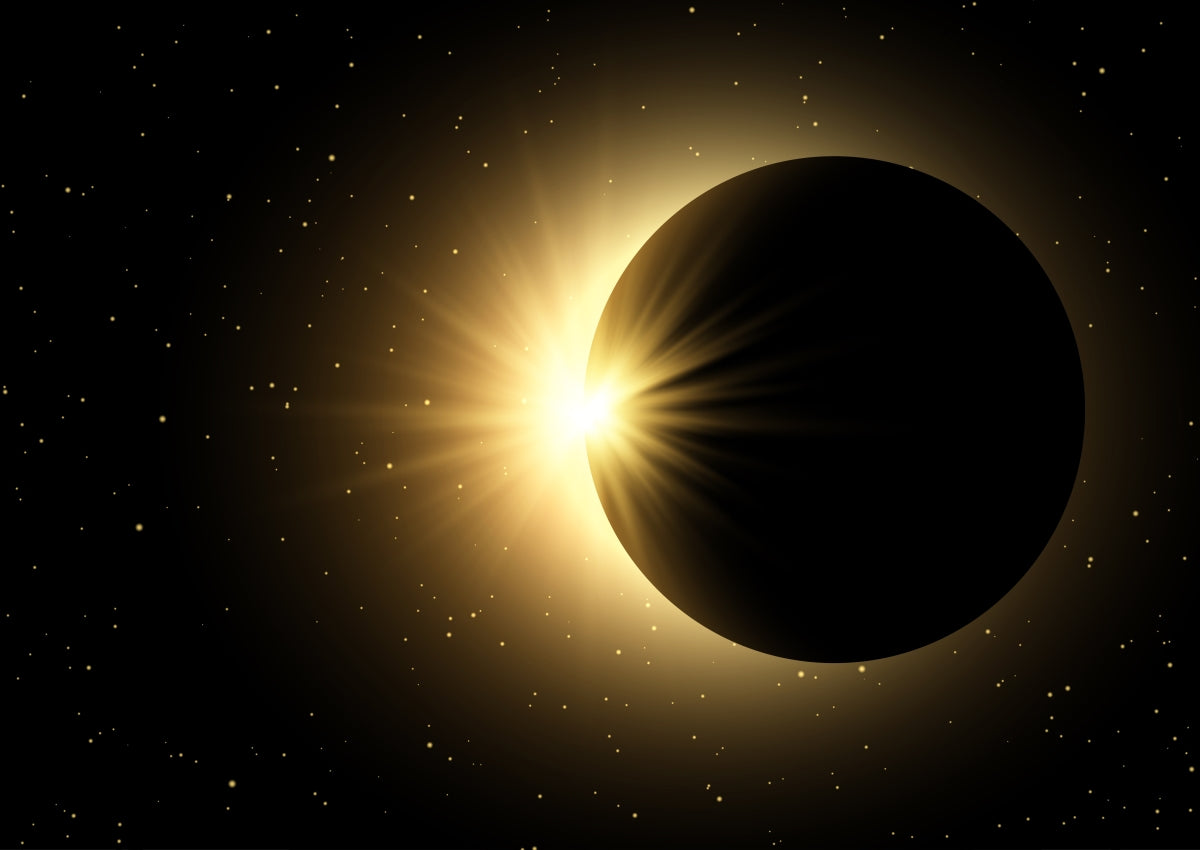On April 8, 2024, a rare event will occur in the skies over Mexico, thirteen States in the USA, and a small portion of southeast Canada. This rare event is a total solar eclipse. This event is so special and rare because it is not just a solar eclipse but a total solar eclipse. In this blog, we'll delve into the science behind the rarity of total solar eclipses. We’ll explore the path of the 2024 eclipse and shed light on the potential health risks that demand our attention.
On April 8, 2024, a rare event will occur in the skies over Mexico, thirteen States in the USA, and a small portion of southeast Canada.
This rare event is a total solar eclipse.
This event is so special and rare because it is not just a solar eclipse but a total solar eclipse.
In this blog, we'll delve into the science behind the rarity of total solar eclipses. We’ll explore the path of the 2024 eclipse and shed light on the potential health risks that demand our attention.
Why is The Total Solar Eclipse Rare?
The moon is much smaller than the sun, so for a total eclipse to occur, the moon must pass through its closest orbit to the sun.
A total solar eclipse means the moon will totally block out the sun, producing a nighttime in daylight hours.
There will be no sun and no moon for a short time in the middle of the afternoon.
Only a very limited area of the USA will experience this total solar eclipse.
The Path of the 2024 Total Solar Eclipse
There are 31.6 million people who live in the total solar eclipse pathway, and, including travelers, it is estimated that over 50 million people will watch the eclipse in the pathway of totality.
NASA has plotted a pathway of the total solar eclipse. That pathway passes through portions of Texas, Oklahoma, Arkansas, Missouri, Kentucky, Illinois, Indiana, Ohio, Pennsylvania, New York, Vermont, New Hampshire, and Maine.
The pathway of the total solar eclipse will be 115 miles wide. Indianapolis and Bloomington, Indiana, are considered the ultimate cities to watch the solar eclipse.
The totality will last slightly under 4 minutes in these Indiana cities and surrounding areas.
Millions of people will travel from all over the USA to the pathway to view this rare event, making it what many are calling the most-watched event in USA history.
Many major US cities are within several hundred miles of the pathway, including Boston, New York City, Philadelphia, Pittsburgh, Washington, D.C., Detroit, Cincinnati, Chicago, St. Louis, Nashville, Memphis, and Houston, to name a few.
Half of the USA population lives within 250 miles of the pathway of the total eclipse.
Health Risks of the Eclipse
The only health risk to watching a solar eclipse involves the eye, namely the retina, the innermost portion of the eye.
Focusing on an object requires the macula, the central most portion of the retina, the area where the photoreceptors are packed the closest together for your best visual acuity.
Watching a solar eclipse without proper eye protection or with insufficient eye protection for a short duration can result in irreversible and permanent loss of vision.
This loss of vision is the result of ultraviolet wavelengths and, to a slightly lesser degree, infrared radiation.
Why Does This Happen?
Everyone is familiar with the technique of using a high-powered lens to focus the sunlight on leaves or paper to start a fire. This is because of the heat generated by the sun’s ultraviolet wavelengths and infrared radiation.
This ultraviolet light and infrared radiation can burn the macula, permanently damaging the eye’s most critical central vision.
This damage is often referred to as retinal burn, solar burn, or solar retinopathy.
The retina has no pain sensors, so the eclipse burn is painless. Full effects of the burn will not be manifested until 24-48 hours after the occurrence.
There is no treatment or cure. A macular burn will result in the loss of central, sharpest vision while peripheral vision is maintained.
In other words, the eye can see blurry images in the periphery, but losing central vision will reduce the ability to read or recognize faces.
Solar Eclipse Eye Protection
The total solar eclipse will be beautiful and magnificent to view but carries extreme danger if the proper eye protection is not utilized.
Solar Bat Sunglasses owner and optometrist Dr. Gary Nesty has designed a medical/optical pair of glasses safe for viewing this most spectacular show in the sky.
The lenses in Solar Bat Eclipse Sunglasses are molded polycarbonate and are of medical/optical quality with a slight amount of prism to improve visual clarity and comfort.
The lenses have an extremely dark tint and are AAS (American Astronomical Society) Solar Eclipse Task Force compliant for total safety viewing the eclipse.
The polycarbonate material filters the ultraviolet wavelengths, and the tint filters the infrared radiation while reducing the sun's brightness. Medical/optical quality gives you the sharp clarity of the eclipse.
Dr. Nesty designed these solar eclipse glasses to give ultimate protection at a modest, affordable price.
Cardboard disposable eclipse sunglasses are being marketed, but as Dr. Nesty says, “Knowing the potential for irreversible visual damage when viewing an eclipse, I would never trust my visual health or that of my loved ones to a cheap cardboard disposable pair of glasses.”

